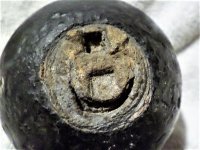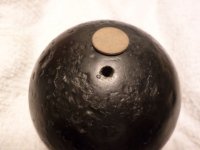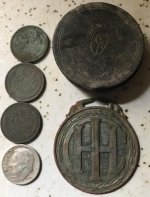petroguy3666
Jr. Member
- Aug 11, 2013
- 95
- 130
- 🥇 Banner finds
- 1
- Detector(s) used
- minelab xterra 705
- Primary Interest:
- Relic Hunting
I am almost sure this cannonball is safe, but I was just seeing what you guys think. The hole on the bottom of this 12 pounder and was obviously done to empty the powder. It is a little smaller than the 1/2 that I normally see on disarmed cannonballs. I can insert a wooden pick in and up to the fuse, but I really can't be sure since I am not the one who disarmed it. I value your guys opinion and just was looking for your thought. Thanx











